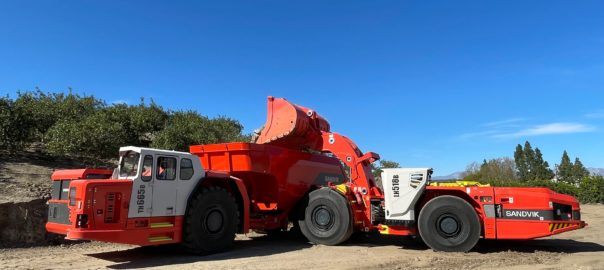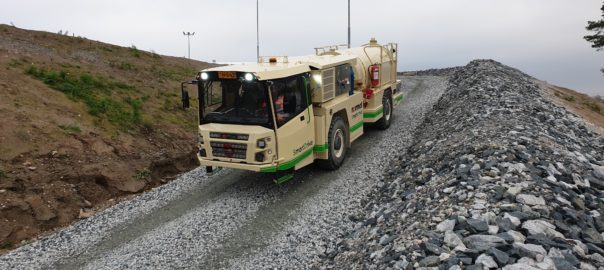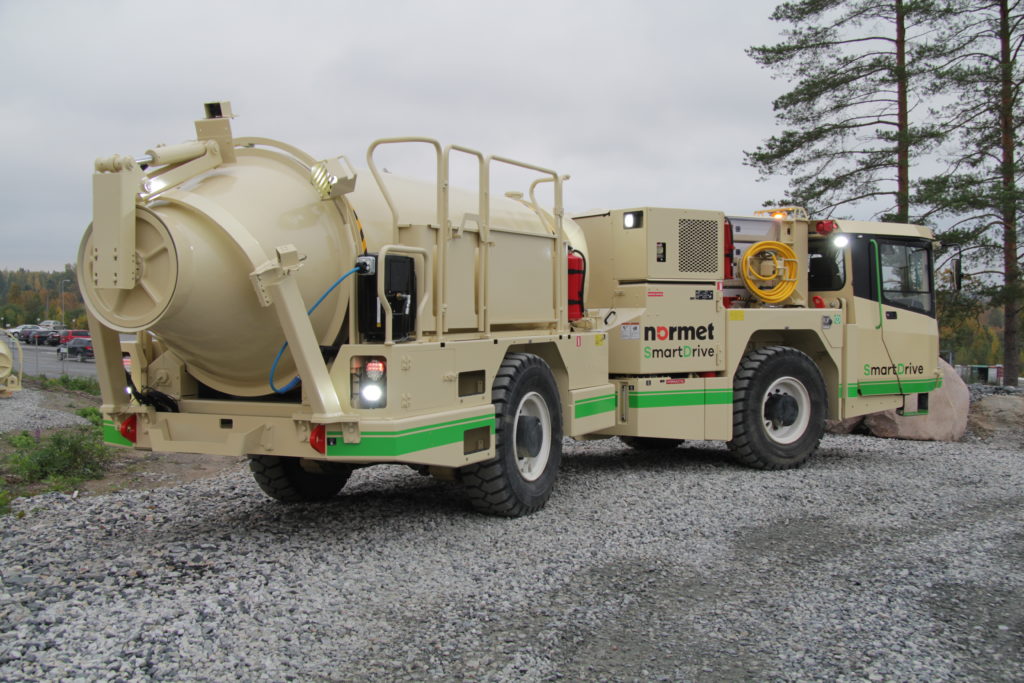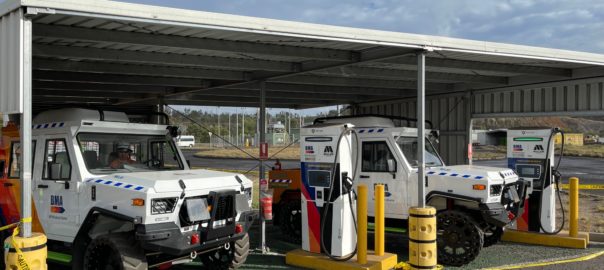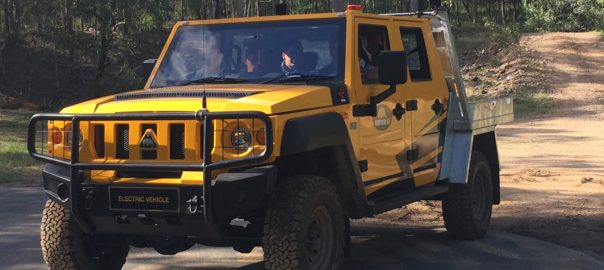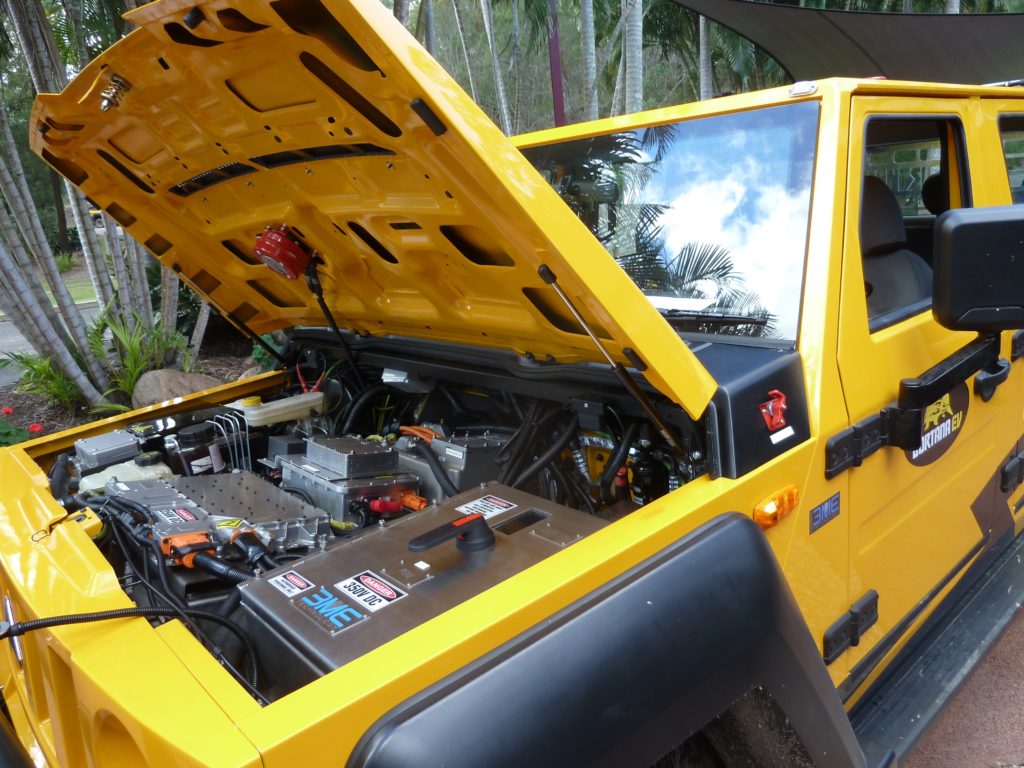Sandvik Mining & Rock Solutions is to have a major presence at this year’s Electra Mining Africa exhibition, with its 385 sq.m indoor stand introducing the African mining market to the OEM’s 65-t payload battery-electric vehicle.
In addition to the appearance of the TH665B, virtual reality (VR) and simulator technology will be employed at the stand to give visitors a highly interactive experience, Sandvik says. Live demonstration of Sandvik’s Eclipse fire suppression system, which can be fitted to the company’s drill rigs, trucks and loaders, will also take place.
Natalie Santiero, Marketing Manager for southern Africa at Sandvik Mining & Rock Solutions, says: “The theme of our stand this year will be the ‘Future of Mining’ and will highlight the many ways in which Sandvik can assist customers to move into the world of the fourth Industrial Revolution (4IR). We will also demonstrate how our products can contribute to a sustainable, net-zero future. The mining industry is moving very rapidly along this path and we’re very much a part of the evolution.”
The BEV to be introduced, which will be the biggest piece of equipment on the stand, will be the 65-t payload TH665B. As the largest capacity battery-electric underground truck, this is the flagship of Sandvik’s fast-expanding fleet of BEVs. The machine is at an advanced stage of development with factory testing completed and full-scale trials on a gold mine in Australia (AngloGold Ashanti Australia’s Sunrise Dam mine).
“The truck we’ll be displaying and launching at Electra Mining Africa is, in fact, the machine that will be trialled in Australia,” Santiero says. “Its appearance at the show will represent its African debut. We see the TH665B as being a critical development, given the determination of many mines to move towards emission-free equipment. It is perfectly paired with our 18-t capacity battery-electric LH581B underground loader, which was officially launched last year. A South African gold mine (Gold Fields’ South Deep) has already ordered the LH518B, with delivery expected shortly.”
Sandvik Rock Processing will be showcasing the 800i series of connected cone crushers through a live demonstration of remotely connected units via the digital service SAM. The 800i series comes with Sandvik’s new generation Automation and Connectivity System, which continuously monitors and optimises crusher performance and controls the complete lubrication system, increasing uptime and reliability, the company says.
The My Sandvik portal customer portal, which will also feature on the stand, provides customers with access to information about their fleet, access bulletins and electronic manuals and allows them to request quotations and place orders anytime they need directly online, according to Santiero.
Training, of course, is a major challenge for many mines and Sandvik will have its Digital Driller™, a compact and flexible solution to safely train operators on the company’s drills, at the show. It allows operators to learn their trade with a realistic simulator which optimises the transition to the real machine, according to the company.
Also in the digital space, Sandvik’s AutoMine® VR training simulator will be demonstrated. “This delivers a realistic AutoMine experience for training,” Santiero says. “Visitors to the stand will be able to put on goggles and manipulate hand-held controls to experience and interact with a 3D virtual reality environment to master the complete process of the AutoMine system start-up procedure without the need for machine or production area allocations.”
Apps are an ever-present aspect of modern life and Sandvik’s Rotary Blasthole Drill Selector app will feature at the event. It provides users with a list of recommended drill rigs based upon basic site conditions and production requirement information.
“Newtrax, which has been part of the Sandvik family since 2019, will also have a presence on our stand,” Santiero says. “They will be showcasing the Collision Avoidance System and Operations Management under the OptiMine® banner.”
Santiero concluded: “There’s no question that the 4IR is with us, not just in mining but many other industries. Sandvik is at the forefront of this revolution and its ability to innovate will be demonstrated very strongly at the show. We’ve spent months planning our stand and we believe that it will prove very popular with visitors to the show.”
Electra Mining Africa is due to take place on September 5-9 in Johannesburg, South Africa.







